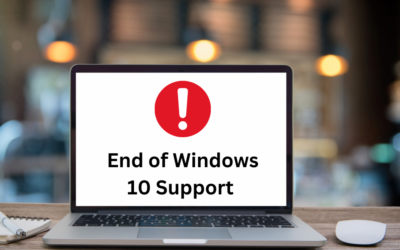In the digital age, email remains a fundamental communication tool for businesses but also a prime vector for cyberattacks. Recognizing the signs of a suspicious email that may actually be a cyber threat is crucial for protecting your business’s data and systems. Here are key indicators that can help you and your team identify potentially malicious emails and take the appropriate precautions.
Unexpected Requests or Attachments
Be wary of emails that arrive unexpectedly or contain unusual requests, especially those that urge immediate action. This could be a request for confidential information, payment transfers, or to open an attachment that wasn’t expected. Cybercriminals often use urgency as a tactic to provoke hasty actions without proper scrutiny.
Sender Discrepancies
Always verify the sender’s email address. Phishing attempts often mimic legitimate email addresses with small, easy-to-miss alterations, such as “rn” instead of “m” or “.co” instead of “.com”. Be cautious even if the email seems to come from a high-ranking official within your company or a reputable external organization; attackers often impersonate authority figures or trusted entities to gain credibility.
Generic Greetings and Signatures
Phishing emails frequently use generic greetings like “Dear Customer” or “Dear User” instead of your name. The lack of personalization can be a red flag, as can signatures that are vague or lack contact information that you can verify separately.
Grammatical Errors and Odd Phrasing
Professional emails from legitimate organizations are typically well-written. Many phishing attempts, however, contain poor grammar, misspellings, and awkward phrasing. Any communication that seems unprofessionally crafted should raise suspicions.
Suspicious Links
Before clicking any link in an email, hover over it to preview the URL. If the address looks strange or doesn’t match the supposed destination, it could redirect to a malicious site. Be particularly cautious with shortened links, such as those created with bit.ly or similar services, as they are often used to disguise malicious URLs.
Requests for Sensitive Information
Legitimate organizations will not request sensitive information (passwords, social security numbers, banking information) through unsecured channels like email. Any such request should be considered suspicious and verified through alternative communication methods.
Inconsistencies in Email Design
Look for inconsistencies in the email’s design compared to previous correspondence, such as different typefaces, logos that are off in color or size, and formatting discrepancies. Cybercriminals might copy a company’s email template, but small details can often be off.
Threatening or Alarming Language
Emails that attempt to scare you into acting by threatening to close accounts or invoke penalties can be red flags of phishing attempts. This tactic plays on fear to compel victims to provide confidential information quickly.
By educating yourself and your team on these signs, you can enhance your defenses against one of the most common cyber threats facing businesses today. For businesses looking to strengthen their cybersecurity posture further, partnering with a cybersecurity expert like UpTech360 can provide additional layers of protection and expert guidance. Contact UpTech360 for a comprehensive approach to securing your digital communications and safeguarding your business from cyber threats.
Leveraging Cloud Services to Enhance Business Efficiency Along the Jersey Shore
For businesses operating along the Jersey Shore, leveraging cloud services offers a multitude of benefits that can transform operations. Cloud computing provides scalable resources, improved data...
What Happens To Your Applications When Windows 10 Support Ends – And What It Means For Jersey Shore Businesses
Mark your calendars: October 14, 2025 – the day Microsoft officially ends support for Windows 10. After this date, there will be no more security updates, bug fixes or technical support. But for...
Mobile Device Management for Jersey Shore Businesses: Securing Your On-the-Go Operations
For businesses along the Jersey Shore, the ability to operate seamlessly on the go is crucial, especially when quick responses and real-time updates are essential. Mobile Device Management (MDM) is...


